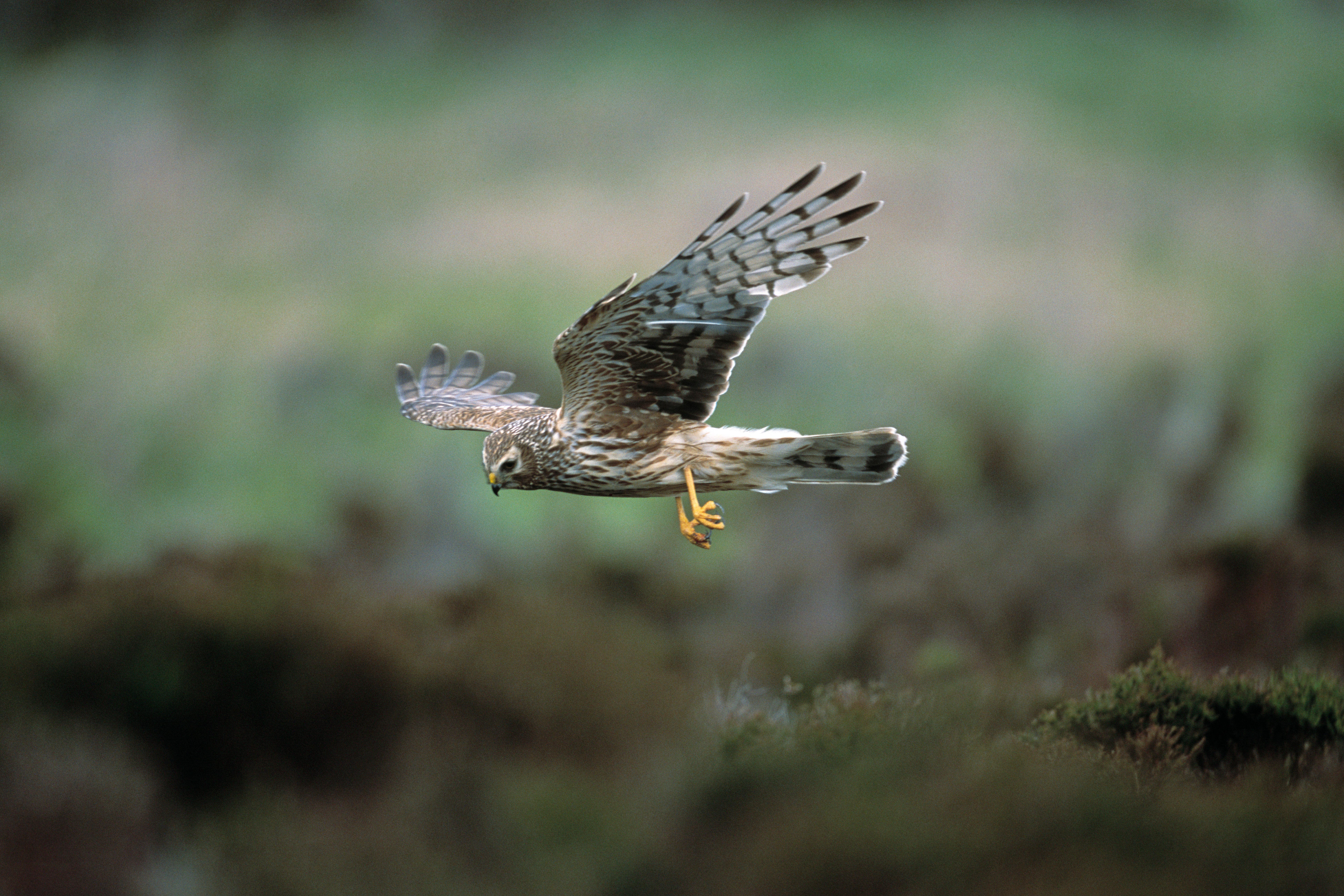Illegal killing major cause of hen harrier deaths, study finds
Researchers used satellite tracking to follow the birds’ movements.

Your support helps us to tell the story
From reproductive rights to climate change to Big Tech, The Independent is on the ground when the story is developing. Whether it's investigating the financials of Elon Musk's pro-Trump PAC or producing our latest documentary, 'The A Word', which shines a light on the American women fighting for reproductive rights, we know how important it is to parse out the facts from the messaging.
At such a critical moment in US history, we need reporters on the ground. Your donation allows us to keep sending journalists to speak to both sides of the story.
The Independent is trusted by Americans across the entire political spectrum. And unlike many other quality news outlets, we choose not to lock Americans out of our reporting and analysis with paywalls. We believe quality journalism should be available to everyone, paid for by those who can afford it.
Your support makes all the difference.Illegal killing is the main cause of death for older hen harriers, one of the UK’s most at-risk birds, according to new research.
The study, led by the RSPB, also found that mortality due to illegal killing was highest in areas managed for red grouse shooting.
Using data from what is said to be the largest GPS tracking programme for hen harriers globally, the authors discovered that individuals tracked by the project were typically living for just 121 days after fledging.
They also found that a 10% increase in grouse moor use by the birds was associated with a 43% increase in the mortality rate.
Steven Ewing, RSPB senior conservation scientist and lead author of the study, said: “Hen harriers have been legally protected for almost 70 years, but this study adds to the already overwhelming evidence base that illegal killing on grouse moors remains a key cause of this species’ low population size and its ongoing absence from large areas of the uplands, particularly grouse moors.”
The RSPB said despite all birds of prey being protected by law since the 1950s and more recently under the Wildlife and Countryside Act 1981, illegal persecution is still known to be a serious issue.
Hen harriers are on the red list of birds of conservation concern in the UK, meaning they are one of the most at-risk species here.
Their stronghold is in Scotland where about 70%-80% of the UK breeding population of hen harriers are found, mostly in Orkney and the Hebrides.
For the new study, published in the journal Biological Conservation, researchers used satellite tracking devices to look into the survival and movements of hen harriers.
Between 2014 and 2020, the RSPB and partners fitted satellite transmitters to juvenile hen harriers at nests across Scotland, England, Wales and the Isle of Man.
Tags were deployed on 148 individuals, 86 of them in Scotland, funded by the Hen Harrier Life project.
The scientists looked at survival rates, causes of death whether natural or through illegal killing, and associations between mortality and land managed for grouse shooting.
The illegal killing of hen harriers and other birds of prey has no place in the nature and climate emergency and must end
Annual survival was low, especially among birds under one year, with illegal killing accounting for the deaths of 27%-41% of birds under one year, and 75% of mortality in birds aged between one and two years.
Not enough birds survived more than two years to estimate mortality due to illegal killing of adults.
Duncan Orr-Ewing, head of species and land management at RSPB Scotland, said: “This study reinforces the devastating impact that illegal killing is having on our hen harrier population, how strongly it is associated with grouse moors, and why urgent changes are needed to bring this to an end.
“There should be three times as many breeding pairs of hen harriers in Scotland than we currently have.
“Thankfully the Scottish Government has undertaken an independent review of the evidence and is now taking action.
“It is proposing to license grouse shooting with sanctions including the removal of the right to shoot grouse where wildlife crimes are confirmed, and to provide a meaningful deterrent to wildlife crime.
“We hope to give evidence to the Rural Affairs and Islands Committee of the Scottish Parliament when it considers the draft wildlife management and muirburn Bill shortly and to present the details of this study.
“The illegal killing of hen harriers and other birds of prey has no place in the nature and climate emergency and must end.”
Mark Tennant, chairman of Scottish Land & Estates, said: “Estates play a vital role in encouraging raptors to flourish, including through the recent Heads Up for Harriers project which saw 28 estates participate and the South of Scotland Golden Eagle Project where 90% of translocated chicks have come from grouse moors.
“Any persecution of hen harriers – and any form of wildlife crime generally – is abhorrent and our members are committed to assisting Government and police in this area.
“In this regard, we recognise the official statistics published by the Scottish Government in its annual wildlife crime report, with the most recent report released last month confirming that offences against birds of prey are at historically low levels with 12 offences recorded in 2020-21.”
He raised concerns around the transparency and interpretation of the tag data, adding: “RSPB Scotland has not provided the data it is using for this latest report to partners and this lack of co-operation undermines a collective effort to tackle raptor crime.”
He said there are “different reasons why tags stop transmitting, not only persecution” and that it is “well established that there is a high natural mortality rate for hen harriers in their first year”, with the weather, fox and bird attacks and prey availability all playing a part.